Understanding why kids struggle with organization & messiness
 Lots of kids have messy rooms and cluttered backpacks. Most will eventually organize their things because they can’t stand the mess or don’t want to get in trouble. Then there are kids who are never neat or organized no matter what the consequence is. Their things are all over the place, and they don’t clean up even when they’re told to. Why does that happen?
Lots of kids have messy rooms and cluttered backpacks. Most will eventually organize their things because they can’t stand the mess or don’t want to get in trouble. Then there are kids who are never neat or organized no matter what the consequence is. Their things are all over the place, and they don’t clean up even when they’re told to. Why does that happen?
Some people see this behavior and assume it’s laziness or defiance. But many kids really do struggle with organization and all the skills that go into it. So do many adults. Organization isn’t just about keeping track of things. It’s also about organizing your thoughts, managing your time, planning, and knowing how to get things done. It means being able to set goals and do things in the right order. People struggle with organization for different reasons. A common one is difficulty with a set of skills called executive function.
When kids have organization challenges, opening their backpacks can be a frightening experience. Crumpled assignments and tests, school announcements from two months ago, even a missing house key — it’s a mess!
Many people think of organization skills as the ability to keep things in order. But people also use those skills to keep their thoughts in order to retrieve and use information effectively. Kids who struggle with organization have trouble handling information in an effective and logical way. They often have difficulty setting priorities, making plans, sticking to a task, and getting things done. These skills become increasingly important as they move through different grade levels.
For some kids, messiness is a choice. They’re not upset by mess or clutter and can clean up when they need to or want to. But for kids who struggle with organization, messiness is a challenge, not a choice. And it can cause a lot of anxiety. Getting and staying organized isn’t simple. It involves a number of steps. And it requires skills like planning and staying focused. When kids have trouble with these skills, the process of getting organized can leave them feeling overwhelmed and anxious. And if they get in trouble for being messy, anxiety can build.
Trouble with organization
 For kids to be organized, they need to rely on a group of mental skills called executive functions. These skills allow kids to start and complete tasks, like picking up their things and putting them away. Young kids may have a hard time with organization because their executive function skills are still developing. But kids who continue to struggle as they get older may have executive function challenges. Trouble with organization and other executive skills is common in kids with ADHD. That’s because ADHD is a problem with executive function. Kids who struggle with organization aren’t messy on purpose. They may even hate being surrounded by clutter or find it overwhelming.
For kids to be organized, they need to rely on a group of mental skills called executive functions. These skills allow kids to start and complete tasks, like picking up their things and putting them away. Young kids may have a hard time with organization because their executive function skills are still developing. But kids who continue to struggle as they get older may have executive function challenges. Trouble with organization and other executive skills is common in kids with ADHD. That’s because ADHD is a problem with executive function. Kids who struggle with organization aren’t messy on purpose. They may even hate being surrounded by clutter or find it overwhelming.
Why messiness and clutter cause anxiety
Kids who struggle with organization on a daily basis are often stressed. The constant search for materials. The loss of important items. And questions from adults: “When did you last have your ______ (notebook, homework, shoes, etc.)?” The experience can be frustrating — and embarrassing. Picture the teacher standing impatiently by your side as you frantically search through crumpled papers for your homework. Or your classmates laughing at the sight of your overstuffed backpack. Or looking at a huge pile of clutter to clean up at home and being overwhelmed at the sight of it. Imagine how anxious and ashamed you might feel about your performance and personal space.
Anxiety can show up in different ways and look different from child to child. When kids face ongoing stress, they may:
- Withdraw from people
- Be irritable
- Misbehave
- Worry about something bad happening
Many kids with ADHD also have an anxiety disorder. The two disorders often co-occur, and their symptoms can look similar. Both can make organization difficult.
Ways to help
There are ways to help your child become more organized and feel less anxious. Here are some tips:
- Use a checklist. Be sure to include step-by-step instructions and due dates to help kids stay on track.
- Take advantage of color-coded folders. Folders can help kids keep items in one spot so they’re easy to find.
- Practice organization. Learning and thinking differences like ADHD can make it hard to stay neat. Extra practice and support are helpful. For example, you can model how you organize the mail at home or the materials in your work bag.
It can be frustrating to have a messy child. But your child is probably frustrated, too. Knowing you understand their challenges can make a big difference in how your child feels.
7 color-coding tips to get your child organized
Does your child have trouble keeping track of things — from class assignments to sports gear? Color-coding is a great way to help kids get and stay organized. Try these ideas to make it easier for your child to keep tabs on stuff at home and at school.
1. Assign a color.
Ask your child to choose a color. If you have more than one child, let each of them choose a color. Then stick to their colors when you choose everyday items like towels, toothbrushes, water bottles, laundry bags, and even electronics chargers. That way each sibling knows right away which thermos or blanket is theirs. This can help them understand which items they’re responsible for — and that can help keep bickering to a minimum.
2. Use different-colored bags for different kinds of gear.
Try organizing your child’s activities by color. Use large washable sacks in different colors. For example, you can keep all soccer supplies in a yellow bag, dance gear in a red one, and so on. This makes it easier for your child to know what to grab on the way to practice or other activity.
3. Color-code the family calendar.
 Use a different color for each family member as you write in events. For example, your child’s activities could be marked in green, yours in red, and so forth. If your family uses a shared digital calendar, you can also assign colors to events. Check under “settings.”
Use a different color for each family member as you write in events. For example, your child’s activities could be marked in green, yours in red, and so forth. If your family uses a shared digital calendar, you can also assign colors to events. Check under “settings.”
4. Use different-colored supplies for each school subject.
Assign each class its own color. Red for reading, blue for math, and so on. If your child has a homework station, follow your color scheme when using bins for class-specific supplies. For example, calculators and rulers for math class go in the blue bin. Older kids can also color-code digital folders on their computers.
5. Try “home” and “school” colors for note-taking.
In class, kids take notes on what they learn from the teacher. At home, they take notes on what they’re studying on their own. If all of your child’s notes are in the same color, it can make it hard to know what was learned where: “Last week, I wrote that an obtuse angle is 90 degrees. Is that really what the teacher said?” Taking at-home and at-school notes in different colors — whether by hand or on a computer — can help your child avoid confusion.
6. Use an underlining system for note-taking.
When each color has a specific purpose, your child can scan a page and know where to look for what. For example, have your child mark all new terms or vocabulary words in yellow, the main topic in green, and each subtopic in pink. (This approach works best for shorter assignments. It could be overwhelming to do it for big chunks of text.) Your child can use this technique on the computer, too.
7. Color-code to-dos.
Use different-colored sticky notes to help your child keep track of when to do things like homework or chores. The color of the sticky note can show how urgent it is. For example, flag tasks that need to be done first with red stickies, next week’s stuff orange, and so on.
COOL RESOURCE
 Every woman has had this experience: you get to the end of the day and realize you did nothing for you. And if you go days, weeks, or even months in this cycle, you begin to feel like you have lost a bit of yourself.
Every woman has had this experience: you get to the end of the day and realize you did nothing for you. And if you go days, weeks, or even months in this cycle, you begin to feel like you have lost a bit of yourself.
While life is busy with a litany of must-dos—work, parenting, keeping house, grocery shopping, laundry and on and on—women do not have to push their own needs aside. Yet this is often what happens. There’s just no time, right? Wrong.
In this practical and liberating book, Jessica Turner empowers women to take back pockets of time they already have in their day in order to practice self-care and do the things they love. Turner uses her own experiences and those of women across the country to teach readers how to balance their many responsibilities while still taking time to invest in themselves. She also addresses barriers to this lifestyle, such as comparison and guilt, and demonstrates how eliminating these feelings and making changes to one’s schedule will make the reader a better wife, mother, and friend.
Perfect for any woman who is doing everything for everyone—except herself—The Fringe Hours is ideal for both individuals and small group use.
Find it here on Amazon

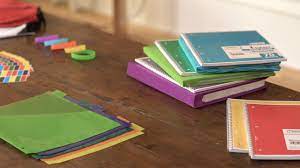


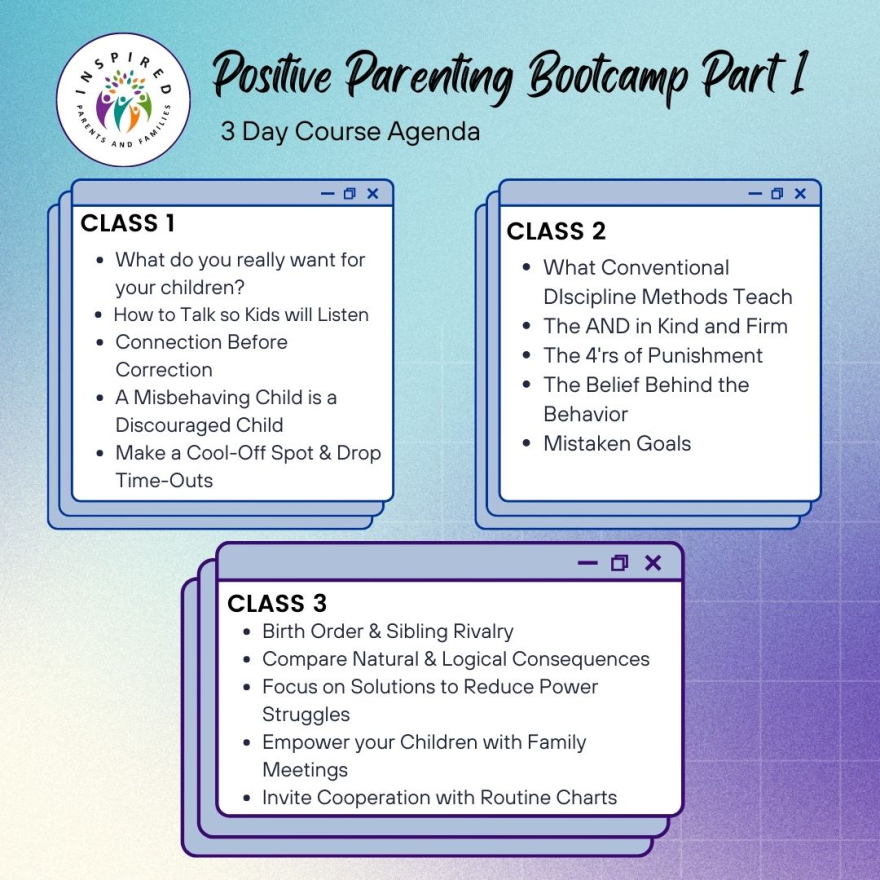 Parents and caregivers will learn long term solutions for raising kids to feel “I am capable, I can contribute, and I can use my personal power in useful ways to improve my life and the lives of others!” Positive Discipline teaches long term parenting skills that will encourage children to think for themselves, become more responsible and have a greater respect for themselves and others. Feel supported while learning some non-punitive, respectful methods that will incorporate kindness and firmness into your relationship with your children. Get to the core of your children's misbehavior, practice encouraging tools and gain a sense of accomplishment.
Parents and caregivers will learn long term solutions for raising kids to feel “I am capable, I can contribute, and I can use my personal power in useful ways to improve my life and the lives of others!” Positive Discipline teaches long term parenting skills that will encourage children to think for themselves, become more responsible and have a greater respect for themselves and others. Feel supported while learning some non-punitive, respectful methods that will incorporate kindness and firmness into your relationship with your children. Get to the core of your children's misbehavior, practice encouraging tools and gain a sense of accomplishment.
 Parent coaching is designed to provide insight, help parents discover newfound energy in their parenting, develop an appreciation for what they have and who they are, and create sustainable ways to achieve their vision or dream for their family. Different than therapy, coaching’s unique methodology allows the coach to provide support as a cheerleader, guide, and mirror. Coaching is perfect for helping parents who are feeling overwhelmed, parents who are baffled by their children’s behavior, parents who are looking to bolster their parenting “tool box,” and parents who simply want to take their family’s life from good to great. Interested to see if Coaching would be a good fit for your family? Click below to schedule a complimentary discovery call.
Parent coaching is designed to provide insight, help parents discover newfound energy in their parenting, develop an appreciation for what they have and who they are, and create sustainable ways to achieve their vision or dream for their family. Different than therapy, coaching’s unique methodology allows the coach to provide support as a cheerleader, guide, and mirror. Coaching is perfect for helping parents who are feeling overwhelmed, parents who are baffled by their children’s behavior, parents who are looking to bolster their parenting “tool box,” and parents who simply want to take their family’s life from good to great. Interested to see if Coaching would be a good fit for your family? Click below to schedule a complimentary discovery call.